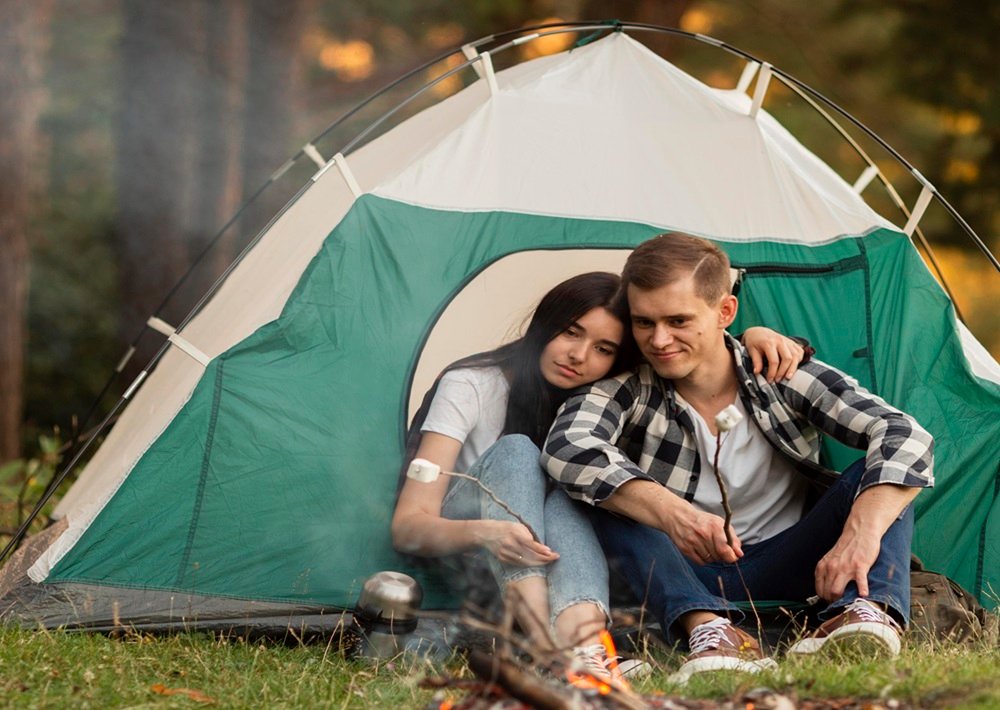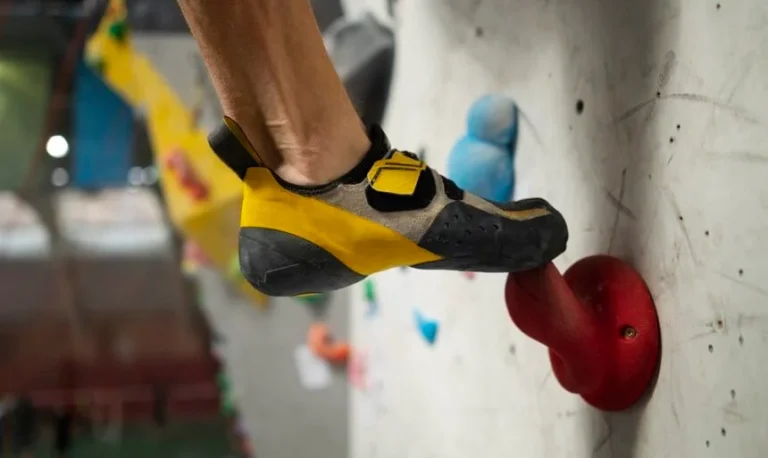You’re shopping for a tent and see “sleeps 4 people” on the label. But here’s what most campers learn the hard way: that north face tent or any other brand’s capacity rating rarely matches your actual comfort needs.
The dirty truth about tent sizing can make or break your camping trip.
Tent Manufacturers Play Fast and Loose with Numbers
The camping industry has a problem. Tent capacity ratings are calculated based on the minimum amount of space a camper could possibly need to sleep, with people sleeping shoulder to shoulder or even head to feet in small backpacking tents.
This means you get just enough space for sleeping in close quarters and nothing more.
Companies calculate this number based on the minimum amount of space a camper could possibly need to sleep, so you’ll often see people sleeping shoulder to shoulder.
The average backpacking sleeping pad is only about 20 inches wide, which makes anything more seem generous to manufacturers.
Here’s a real example: The Eureka Copper Canyon LX 12-person tent measures 168″ x 144″ (14′ x12′) and they’ve squeezed twelve people into that space.
This allows only 28 inches for the shoulders of each person, and 6 feet for the height of each person.
The Two-Person Rule Changes Everything
Most experienced campers follow a simple rule: subtract at least two people from any tent’s rated capacity.
A general rule of thumb is to subtract two people from the capacity rating of any given tent.
For example, if you plan on sleeping a family of four in your tent, it’s probably a good choice to choose a 6-person tent size.
This rule exists because you need space for:
- Your gear and equipment
- Comfortable sleeping arrangements
- Room to move around inside
- Storage for wet or dirty items
Real Tent Size vs Rated Capacity Breakdown
Here’s what tent sizes actually feel like in real camping situations:
| Tent Rating | Actual Comfortable Capacity | Square Footage | Per Person Space |
| 2-person | 1 person luxurious | 20-35 sq ft | 20 sq ft |
| 4-person | 2-3 people comfortable | 60-70 sq ft | 30 sq ft |
| 6-person | 4 people with gear | 90-100 sq ft | 25 sq ft |
| 8-person | 6 people comfortable | 120-140 sq ft | 25 sq ft |
The average 4-person tent has a rated capacity for 4 people and an ideal capacity of 2 people. A 4-person tent is considered spacious for 2-3 people and a very tight fit for 4 people.
Calculate Your Space Using Square Footage
Instead of relying on person ratings, smart campers use square footage. Divide the tent’s square footage by how many people you plan to bring along. Do you have more than 30 square feet each? Then it’s probably big enough.
For comfortable car camping, aim for at least 30 square feet per person. This gives you room to sleep, store gear, and move around without feeling cramped.
For a casual family outing, anything less than 30 square feet per person isn’t enough room. You’ll feel cramped and frustrated, especially if weather forces you to spend more time inside.
Different Camping Styles Need Different Space
Your tent size needs change based on how you camp:
Backpacking: Weight matters more than space. You can use the tent’s rated capacity since you’re only sleeping and storing minimal gear.
Car Camping: For comfortable car camping, decrease the recommended capacity by at least two campers. You’ll have more gear and want comfort over weight savings.
Glamping: If you’re looking for lots of room or even a glamping situation, you could easily double the number of campers to determine what size tent you should purchase.
Tent Shape Affects Usable Space
Not all square footage is created equal. Just because a tent has a lot of square feet, doesn’t mean they’re all usable as sleeping quarters.
Dome tents waste space at the edges where the walls slope down, while cabin-style tents maximize usable floor space with vertical walls.
Watch out for irregular tent shapes. If your tent comes in a cross shape or an L shape, these are the sizes you should be wary of. They might be great tents, but they might not be as big as you expect.
Additional Features That Add Real Space
Look for tents with vestibules or gear storage areas. A vestibule is a covered area outside the main tent but still part of the structure, allowing you to store backpacks, shoes, and other items without taking up valuable sleeping space.
Some high-end tents offer impressive additional space. The North Face Wawona 6’s floor space is a whopping 86 square feet.
The spacious vestibule is about half the size of the tent itself, leaving room for gear, bikes, or even space to sit when the weather rolls in.

Make Your Final Decision
When choosing your tent size, consider these factors:
- How many people will actually sleep in it
- What type of camping you’ll do most often
- How much gear you typically bring
- Whether you need standing room
- Your personal comfort preferences
Remember: you can always make a big tent feel smaller with good organization, but you can’t make a small tent bigger.
When in doubt, size up. You’ll appreciate the extra space during bad weather, when storing wet gear, or when you just want to stretch out after a long day outdoors.
Frequently Asked Questions
Why does a North Face tent say it “sleeps 4” when it barely fits 3 comfortably?
Tent capacity is based on tight sleeping arrangements only—think shoulder-to-shoulder with no gear space. Manufacturers often overstate capacity, so real comfort usually means subtracting two people from the listed size.
How do I know what size tent I actually need?
Use square footage, not person count. Aim for at least 30 sq ft per person for car camping. For backpacking, capacity ratings are more accurate since you pack light and only sleep in the tent.
What’s the difference between dome tents and cabin tents in usable space?
Cabin-style tents have vertical walls and maximize usable space. Dome tents often have sloped walls that reduce headroom and edge space—so total square footage may be misleading.
Is the North Face Wawona 6 tent actually roomy for 6 people?
Not exactly. While it’s rated for 6, it’s ideal for 4 people plus gear. Its 86 sq ft interior plus a large vestibule gives you generous room for car camping or family trips.
What are vestibules, and why do they matter?
A vestibule is a covered area outside the main sleeping area—great for storing gear, shoes, or cooking in bad weather without sacrificing sleeping space.
What’s the best North Face tent for family camping?
Look for tents like the North Face Wawona 6, which combine a spacious interior, a large vestibule, and good weather protection. It’s perfect for 4-person comfort camping with room to spare.
Is it worth sizing up when buying a tent?
Yes. A larger tent increases comfort, storage, and versatility, especially if you encounter bad weather or bring extra gear. You’ll never regret extra space, but cramped quarters can ruin a trip.




